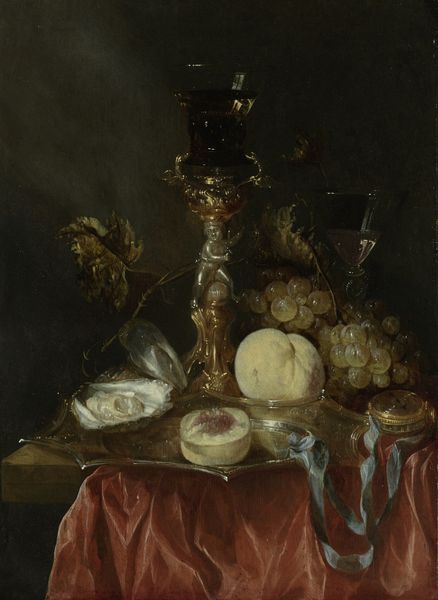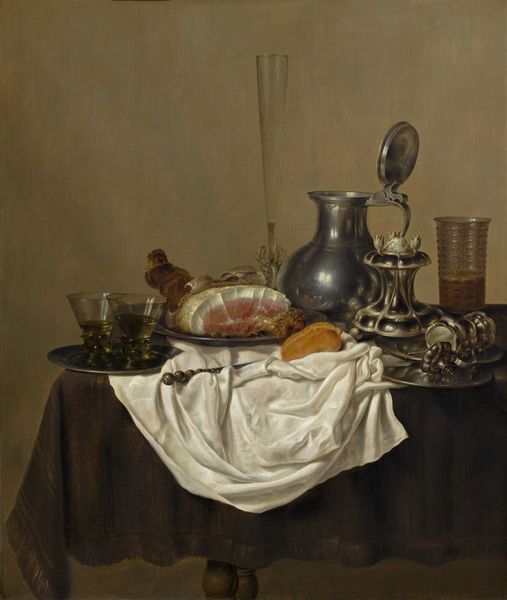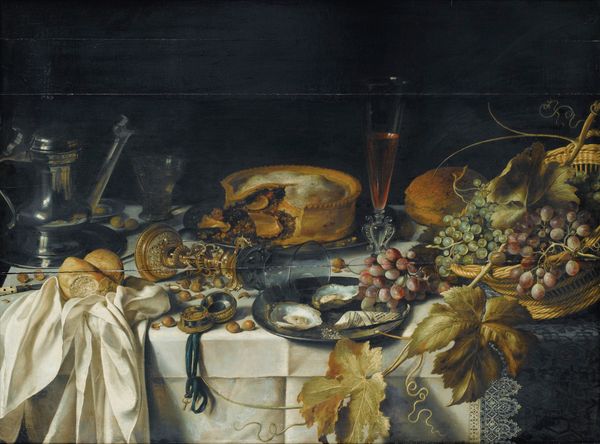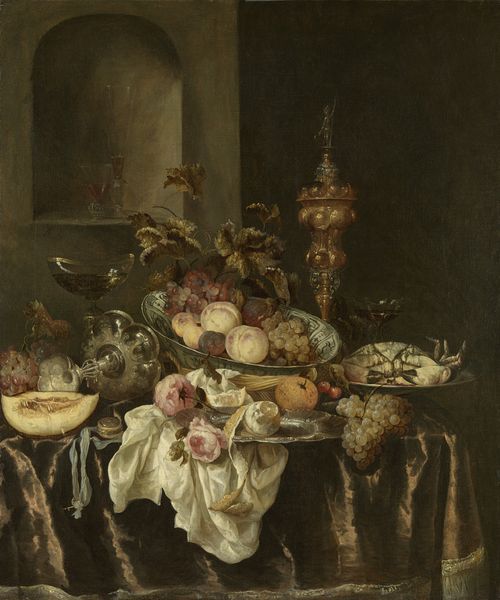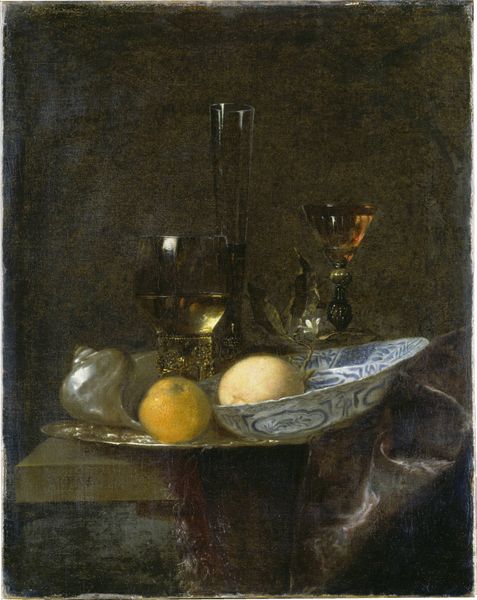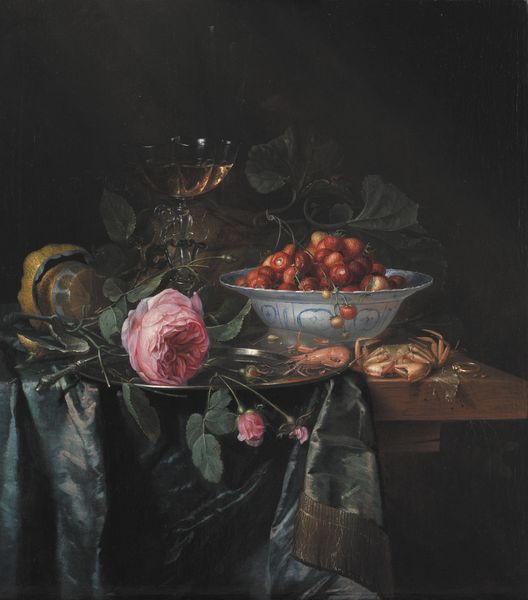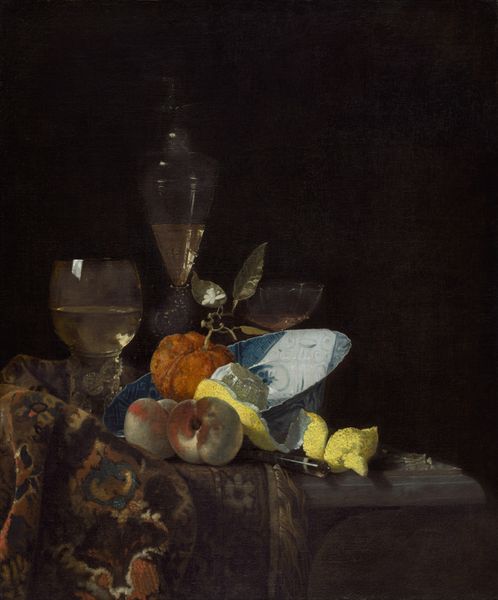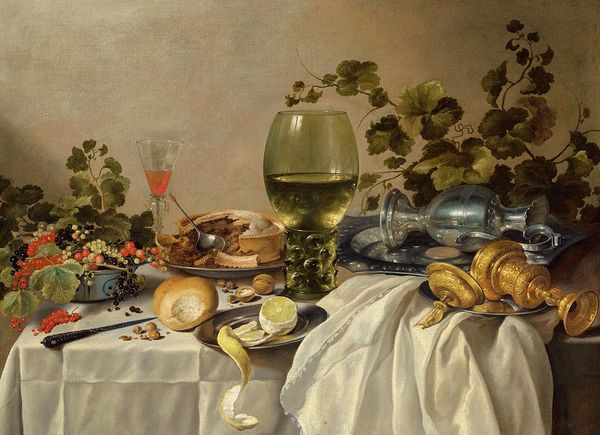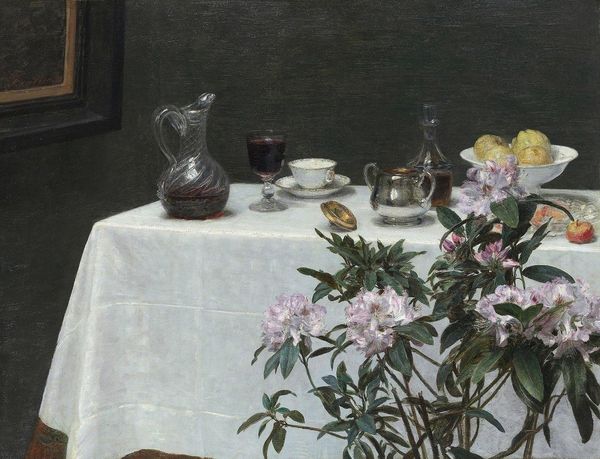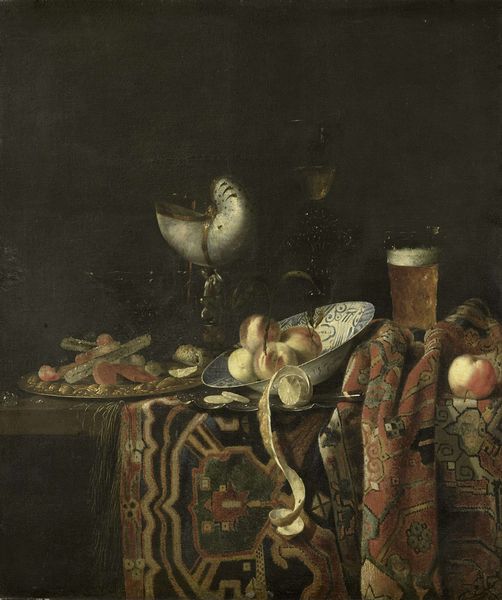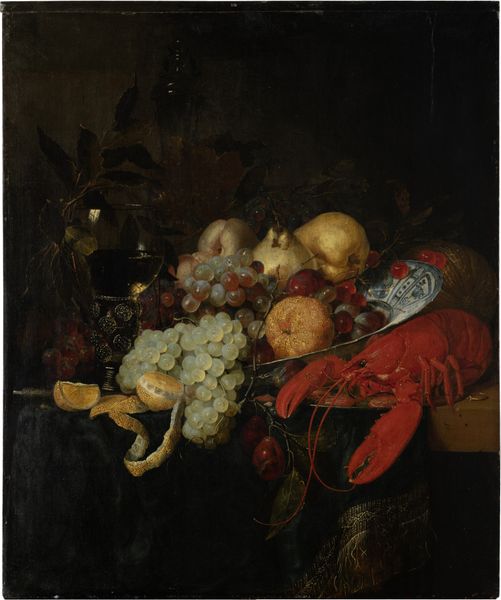
oil-paint, oil, canvas
#
baroque
#
dutch-golden-age
#
oil-paint
#
oil
#
flower
#
oil painting
#
canvas
#
vanitas
#
14_17th-century
#
history-painting
Dimensions: 88.8 x 73.7 cm
Copyright: Public Domain
Editor: This is Peter Willebeeck's "Vanitas Still Life," from around 1650, created with oil paint. It has a somewhat somber feel, with the skull and fading flower taking center stage. What stands out to you when you examine the materials and context of this work? Curator: The assemblage of objects speaks volumes about 17th-century Dutch society and its relationship to materiality. Notice the luxurious items – the silver pitcher, the nautilus shell, the elaborate goblet. These aren't just symbols of wealth, but products of global trade networks fueled by colonial exploitation and a growing merchant class. Editor: So, the objects tell a story about consumption and access? Curator: Exactly. Consider the artist’s labor too. The meticulous detail rendered in oil paint highlights the skill and time involved in its production. But it also invites us to reflect on who could afford such artistry, and what economic structures allowed for its creation. How does the presence of both organic matter (the flower, the skull) contrast with the metalwork, conceptually? Editor: I guess the perishables really bring forward the theme of "vanitas," reflecting on the ephemeral nature of earthly pleasures in stark contrast to material durability. It prompts thoughts about artistic labour, societal inequality and morality… it all sounds rather contemporary. Curator: Precisely! These still lifes were bought, traded, and displayed, embodying complex power dynamics inherent in artistic creation and economic reality. Appreciating how those dynamics underpinned the creation of such refined paintings is an enduring skill. Editor: That puts the whole painting in a new, sharp focus for me. Thanks!
Comments
stadelmuseum almost 2 years ago
⋮
The skull and pistol give this still life by Peter Willebeeck a meaning that can be understood instantly, even by the modern-day viewer. They make it possible to identify a similar meaning in several other objects, for instance the clock that can show the passing of time but cannot hold it back, or the sound of the lute that ineluctably fades away. More subtly – though with equal clarity in the context of the objects already mentioned – the notion of transience is also conveyed by the fragile glass, the overturned goblet and the wilting flower.
Join the conversation
Join millions of artists and users on Artera today and experience the ultimate creative platform.
